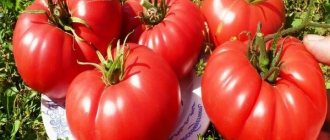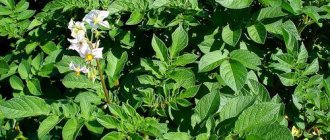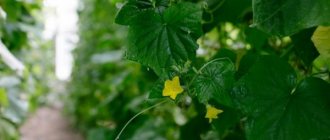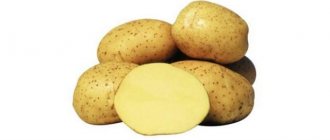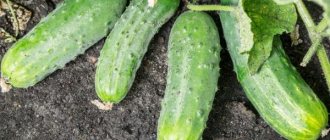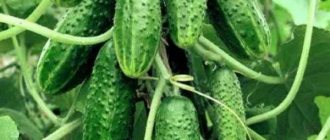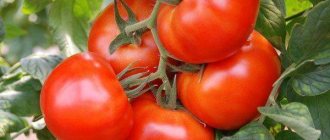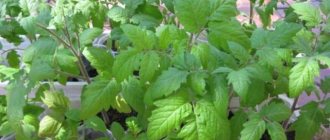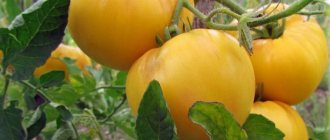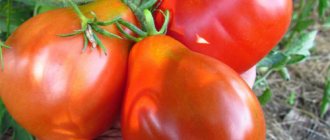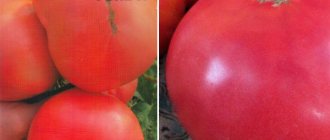The radish hybrid Celeste F1, which is distinguished by its early ripening period, up to 20-25 days, and sought-after consumer qualities, was created by Dutch breeders. In Russia, it has been cultivated for home gardens and agro-industrial cultivation since 2009. During this time, the Celeste radish has become popular.
Description
The radish hybrid is distinguished by a compact rosette of tops, bright green leaves grow low. Root crops of the Celeste variety reach 4-5 cm in diameter when fully ripe. Round, with a thin tail and shiny bright red skin. The pulp is dense, juicy, with a characteristic radish smell. The taste of root vegetables of the Celeste variety is pleasant, has an appetizing bitterness, but is slightly spicy. With a good agricultural background, radish gains 25-30 g in 25 days. You get 3-3.5 kg of crispy spring delicacy per 1 sq. m.
Photo gallery
Botanical features
Radish Celeste F1 is a hybrid of early ripening and high yield. It is characterized by the following external varietal characteristics:
- standard round radish shape with a smooth surface;
- rich red-pink color of the fruit;
- relatively large vegetables - the average weight of one radish is 30 g;
- white juicy subcutaneous part of excellent taste;
- low growing green part.
Did you know? The appearance of radishes in European countries is due to the Italian merchant Marco Polo, who, upon returning from his legendary journey (at the end of the 13th century), brought the seeds of this crop from China.
Advantages and disadvantages
- The main advantages of Celeste F1 include:
- ripening in the shortest possible time;
- good yield (from 1 m² of area you can harvest from 2.5 to 3.5 kg of root crops);
- high taste characteristics;
- absence of such troubles as bolting and flowering;
- suitability of the crop for long-term storage;
- excellent resistance to harmful insects and various diseases;
- preservation of commercial qualities during transportation over fairly long distances.
- The presented hybrid also has disadvantages, although not significant:
- the vegetable must not be planted on saline, dense and excessively dry soils;
- radishes stop growing in soil with very high humidity.
Advantages and disadvantages
| Advantages | Flaws |
| Precocity | The plant does not develop well in heavy, saline and acidic soils |
| High degree of productivity and marketability of the hybrid radish variety Celeste: simultaneous ripening, uniformity of root crops, attractive appearance, pleasant expected taste | Requirements for soil fertility depending on predecessor crops. Plant development and yield drop sharply if the area was previously occupied by any type of cabbage and other cruciferous vegetables, as well as beets or carrots |
| Easy care. Hybrid radish variety Celeste is grown in open ground and in greenhouses | Requires sufficient watering, but without waterlogging |
| Transportability and shelf life of root crops of the Celeste hybrid | |
| Resistance of Celeste radish to bolting and flowering | |
| Hybrid Celeste is not susceptible to peronosporosis |
Advice! The fall harvest of radishes can be stored in the basement for up to 2 weeks. The root crops of the Celeste hybrid are placed in wooden boxes on a layer of sand or sawdust.
Description of the hybrid
Celeste F1 is a first generation hybrid bred by Dutch breeders. The originator is the Dutch manufacturer Enza Zaden, well-known in the agricultural sector.
Celeste is not included in the Russian state register.
Nevertheless, the hybrid is popular among gardeners around the world, including in our country. Its main feature is its ability to adapt to any conditions. He is not afraid of cold weather or heat.
Suitable for growing in open ground in all regions of our country, for example, in Moscow. Gardeners love this type of radish for its large and juicy fruits. They have a balanced taste with a light, barely noticeable pungency.
Celeste is immune to culture-specific diseases. This property allows you to grow an environmentally friendly and safe product.
Advantages and disadvantages of Celeste
The popularity of Celeste is due to an extensive list of advantages with an almost complete absence of disadvantages. Thanks to this, even a novice gardener will not be difficult to cope with growing radishes.
Advantages of Celeste:
- early ripeness;
- immunity to diseases characteristic of radishes;
- high keeping quality of fruits;
- excellent taste and juiciness of root vegetables;
- resistance to temperature changes;
- ease of care;
- high germination of planting material;
- uniform ripening of root crops;
- absence of peduncles and arrows;
- Possibility of growing in open and protected ground.
The only drawback of Celeste is hybridity: each time you have to use purchased seeds.
Note! A disadvantage common to all radishes is the ability to accumulate harmful substances from the soil in the roots. For this reason, it is not recommended to use chemicals to prevent diseases and pests.
Preparing seeds for sowing
Having purchased the seeds of the Celeste hybrid in branded packaging from the manufacturer, they are simply sown in the soil. It is recommended to prepare and disinfect untreated seeds. Many gardeners have their own methods for treating radish seeds before sowing. The most popular is soaking in hot water or potassium permanganate.
- Radish seeds in a gauze bag are placed in a container with hot water: no higher than 50 oC for 15-20 minutes;
- Soak in a pink solution of potassium permanganate for 15-20 minutes;
- Then the seeds are dried and sown;
- In order for the grains to germinate faster, they are kept for 24-48 hours in a damp cloth in a warm place;
- For the successful development of the Celeste variety, they practice soaking the seeds in solutions of growth stimulants according to the instructions.
Harvesting
Celeste F1 reaches maturity in a fairly short time, already on the 24th day after sowing. But the ideal moment for collecting root crops is when they reach average weight, that is, exactly a month after sowing. Remove the radishes by simply pulling the tops.
Vegetables can withstand transportation over long distances very well, and after 3-4 days their original appearance remains virtually unchanged. In this case, it is preferable to transport the crop together with the tops. Keep the fruits in the refrigerator (in the vegetable compartment), first placing them in a plastic bag. The bag should have a hole for ventilation, or it can be opened slightly. Under such conditions, the fruits will be stored for approximately 60 days. However, try to eat them early before they lose their flavor.
As you can see, even beginners in gardening can cultivate radishes of the Celeste F1 variety. By allocating a minimum of money, time and effort, you can get a decent harvest of high-quality root crops.
Features of cultivation
Radish Celeste F1 is cultivated for spring and late summer or autumn sowing. The plant bears fruit best on loose sandy loam soils with a neutral acidity reaction - 6.5-6.8 Ph. Radishes are not planted in areas that were occupied by other root crops last year. Those gardeners who prefer to apply mineral fertilizers adhere to the recommended rate per 1 square meter. m: 20 g superphosphate, 100 g potassium sulfate, 30 g potassium magnesia, 0.2 g boron. Fertilize the soil with humus - 10 kg per 1 sq. m.
In the open ground
Radishes are sown on the plot in April or until mid-May in still moist soil. As a seasonal autumn vegetable, radishes of the Celeste variety begin to be grown in late July or August, which depends on the climatic conditions of the regions.
- Furrows for sowing are made every 10-12 cm. Seeds are laid out at intervals of 4-5 cm to a depth of 2 cm. On dense soils they are deepened only 1-1.5 cm;
- Holes for seeds are also marked using seedling cassettes, where the bottoms are arranged according to a 5 x 5 cm pattern;
- Watering is carried out regularly so that the soil does not dry out, approximately 10 liters per 1 square meter. m, if watered daily;
- Feed 2 weeks after germination with infusion of chicken manure in a ratio of 1:15, watering between rows.
Important! In both spring and summer, after sowing, the bed with the Celeste variety is covered with lutrasil for better germination and protection from spring flies.
In the greenhouse
In closed ground conditions, radishes of the Celeste variety are sown in winter or at the end of March, beginning of April. Care must be taken to add humus for plowing.
- In hot weather, radishes are watered daily with 5-7 liters per square meter;
- In cloudy, damp weather, it is enough to water with the same rate once every 2-3 days;
A week and a half after emergence, the Celeste hybrid is fertilized with mullein solution: 200 g per 10 liters of water, adding 1 teaspoon of urea.
Attention! Radish beds are mulched with chopped straw mixed with humus.
Reviews from gardeners
Reviews from gardeners about Celeste radishes are mostly positive. Gardeners note the high yield of the hybrid and its unpretentiousness.
Alisa, Moscow: “I’ve been growing Selesta radishes for several years now. A very productive hybrid. The seeds have almost one hundred percent germination. I don’t even sort through them, they all sprout. I fertilize radishes with silage, bread tincture and chicken droppings. In total I apply 1 fertilizing per season. I use not only root vegetables, but also young greens. It is suitable for salads and green cabbage soup.”
Alexander, Sochi: “I grow Celeste all year round. In spring, autumn and summer in open ground. In winter in a greenhouse. I use two beds. I sow radishes on them one at a time with an interval of 20 days. After each harvest, I always water the beds with hot copper sulfate. I add urea, superphosphate and potassium. I feed it with silage containing chicken manure. The harvest is excellent. Root vegetables are very tasty and juicy. There are practically no pacifiers. I will plant more."
This is interesting ! Radishes are so unpretentious that they are even grown on space stations.
Problems during cultivation
| Problem | Causes |
| Celeste radish roots are small, rough, fibrous | Late sowing: at temperatures above 22 °C, radish develops worse. Lack of moisture in the top layer of soil in the first 2 weeks of root crop growth |
| The plant shoots | At the beginning of growth, during the first 10-15 days the weather is below 10 °C or above 25 °C. The seeds are sown too thickly |
| Too dense and hard root vegetables | After rains or irregular watering, a crust has formed on the garden bed |
| Radish Celeste bitter | The plant developed for too long due to non-compliance with the rules of agricultural technologies: poor soil, lack of watering |
Description of the Celeste radish variety
The radish hybrid Celeste was bred by Dutch scientists as an early-ripening and high-yielding variety of spring vegetable. It is characterized by:
- correct rounded shape of the root crop, without humps and depressions;
- bright, red-pink uniform color;
- low-growing tops.
The variety was introduced and patented by the famous manufacturer of vegetable hybrids “Enza Zaden” specifically for farms, but amateur gardeners, having discovered all the advantages of the Celeste radish, adopted it for themselves. Now this hybrid is widespread and is in demand both on farms and in home garden cultivation.
The hybrid is successfully cultivated from mid-March to the end of November and in our latitudes, gardeners speak only positively about it.
Radish celeste
Diseases and pests
The hybrid radish variety Celeste has developed immunity against many diseases. Gardeners note that he practically does not get sick. Only through violation of watering rules can fungal rot develop.
| Diseases/pests | Signs | Control measures and prevention |
| White rot occurs when there is excess moisture at temperatures above 22 °C | Browning of the root, soft tissue with white spots | The radishes are removed. Root crops have not been sown in the garden for 3 years. In the greenhouse, the soil is disinfected |
| Gray rot appears when there is excess moisture and a temperature of 15-18 oC | Brown spots have a gray coating | Every autumn you should carefully remove all plant debris and observe crop rotation. |
| Viral mosaic is transmitted by aphids and weevils | The leaves are covered with patterned spots. The plant does not develop | There is no treatment. Prophylactically follow growing recommendations |
| Actinomycosis develops in hot and dry weather | Brown spots and spots that turn into growths on the root crop | Compliance with crop rotation |
| Black leg occurs more often in a greenhouse when the soil and air are waterlogged | The plant is rotting at the base. The entire crop may die | Regular watering without excess, ventilation, crop rotation |
| Cabbage flea beetle | Leaves of young plants with holes. Seedlings may die | Dust with wood ash and ground pepper. The latest popular invention: spraying with “Bim” shampoo, which is designed to combat fleas in dogs (50-60 ml per 10 liters of water) |
Further care
Caring for the Celeste F1 radish is not too labor-intensive. Plants need regular irrigation, proper feeding and soil care.
Watering
Watering should be sufficient, but make sure that the water does not stagnate in the garden bed, otherwise the root crops will begin to rot.
Shallow irrigation is harmful to this crop, as it promotes the formation of soil crust and the growth of weeds. Irrigation in two or three stages will allow the water to penetrate deep enough into the soil. Use a watering can with a fine sieve for this. The optimal method of watering is sprinkling on the foliage. Use warm, settled water.
Feeding
The fertilizer needs of radishes are determined by the appearance of the plant. If the tops grow at an accelerated pace to the detriment of fruit formation, then the soil is oversaturated with nitrogen. Feed your plants with phosphorus and potassium to correct the situation. To do this, dissolve 40–50 g of superphosphate and 15–20 g of potassium sulfate in 10 liters of water.
Video: Feeding radishes and controlling their pests
Pale green tops and slow growth of root crops indicate a lack of nitrogen. To replenish it, add urea in one go (1 tsp per 10 liters of water).
Important! Be careful in the amount of fertilizing applied. If you overfeed the beds, then most of the crops will go to arrows.
Soil care
An important technique for caring for the soil under radishes is loosening. The first weeks after planting the seedlings, loosen the soil carefully, to a shallow depth (2-3 cm), then deeper (5-6 cm) to promote better penetration of air and nutrients to the roots. Try to loosen the area after each irrigation or rain.
Along with loosening, if necessary, free the bed from weeds.
You need to mulch the soil with dry humus and compost. Mulch also helps the soil stay warm and moist.
Preparing the seeds for planting
To get a high yield, it is worth preparing the radish grains a little for sowing, because for them, a change in the microclimate around them is a kind of stress. There is nothing complicated in the preparatory process; in order to reap a rich harvest, it is enough to perform the following manipulations before sowing:
- Two days before sowing in the ground, the seeds must be soaked in damp cotton cloth. Sometimes pre-soaking is carried out by placing the grains under the freezer in order to slightly harden the future vegetable.
- Additionally, for disinfection, the seeds are kept in a weak solution of potassium permanganate for 12 hours.
After this, you can sow in pre-prepared soil.
Radish seeds
Timing and technology of sowing
You can grow radishes in a heated greenhouse all year round. However, the biological characteristics of the crop are such that the seeds germinate best in early spring, in March - April. Root crops of this variety ripen in 25–35 days, but depending on the time of planting and growing conditions, the timing may be different. If the seeds are sown in early February, it will take approximately 1.5 months to ripen; if in March, the period will be reduced to 1 month, and radishes sown in April will ripen in 21–25 days in greenhouse conditions.
If the purpose of growing radishes is for autumn or winter consumption of vegetables, then it is necessary to take into account that from September to January root crops grow less intensively than in the spring - it may take 1.5–2 months to ripen one crop.
To ensure fresh vegetables are on your table, seeds should be planted regularly throughout the winter, every 2 weeks.
Sowing radishes in a greenhouse should begin with preparing the soil. Radishes of the “Celeste” variety prefer loose and fertile soil; it is better if it is a light sandy loam substrate with neutral acidity. If the soil in your greenhouse is far from these characteristics, you need to adjust its composition: river sand will help make the soil looser, and lime or dolomite flour should be added to level out the acidity. Then you need to dig up the bed, add mineral fertilizers, level it, and leave it for a while to warm up.
The area where radishes will be grown should be well lit naturally, even if your greenhouse has plant lighting. Before planting seeds, the bed must warm up. You should also observe crop rotation - do not plant radishes after cruciferous crops (all types of cabbage, radishes, turnips). It is not recommended to sow seeds for 2 years in one place - this may affect the yield.
Seeds also need to be prepared before sowing. First of all, they need to be calibrated (select the largest ones). The larger the seeds, the better and faster they will develop. After selection, the seed must be soaked in water. Heavy, and therefore high-quality, seeds will settle to the bottom, and empty ones will float to the surface. For sowing, we take only those that have sunk to the bottom and disinfect them in a solution of potassium permanganate for about 1 hour. To speed up germination, the material can be soaked for a day in warm water, or wrapped in a wet cloth.
When the soil and seed are prepared, you can begin sowing. Along the entire length of the bed, make furrows 3-4 cm deep at a distance of 6-10 cm, water them well. Then place the seeds in the holes at a distance of 4–5 cm, preferably in a checkerboard pattern. You can, of course, sow more densely and in one row, but then the seedlings will have to be thinned out. The seeding depth should not exceed 1.5 cm. After sowing, the furrows are carefully covered with earth and leveled. The first shoots, as a rule, appear after 2–3 days.
Soil and its preliminary preparation
Radish Celeste pleases with especially high yields and fruits of excellent quality on soft, sandy loam soils. The harvest will be good on other soils; on clayey and black soil, it will be necessary to regularly loosen the top layer of soil.
Before sowing the seeds, the bed must be prepared. To do this, it is dug up and fertilized with organic matter; diluted slurry is considered the most suitable. It is this that will be able to provide the plant with maximum nutrients for normal growth and root formation in such a short time. But chemical preparations should not be used; they will negatively affect the environmental friendliness of the grown trunk.
Description of the variety Celeste F1
Radish Celeste F1
Celeste F1 is an early hybrid with high yield. Ripening occurs in 23-25 days from the moment of emergence. The variety is grown mostly in greenhouses, as it produces large yields there, but it can also be sown in open ground.
The root crop has a round shape, sometimes it can be slightly elongated. Weight on average 30 grams. The color is bright red on the outside and white on the inside. The pulp is very juicy and crunches when bitten. Even when overripe, no voids are formed in it; it always has a uniform texture. The taste is excellent. There is bitterness, but it is light, adding piquancy to the taste, and not harming it.
Problems
"Celeste" rarely causes problems when growing, but novice gardeners may encounter the following difficulties:
- Root crops are cracking - adjust the watering of the crop and mulch the bed. The variety loves very moist soil, but does not tolerate overflow and dryness.
- The seedlings do not develop well - fertilize with a solution of ash or mullein.
- The vegetable began to shoot and bloom - the reason may be too long daylight hours and abuse of fertilizers. Stop fertilizing and start shading your plantings.
Reviews of radish Celeste F1
Radish variety Celeste F1
Radish variety Celeste F1 is highly respected by gardeners. It is early ripening, has a pleasant taste, and is easy to care for. And what other qualities do gardeners note about it?
Anton Lebedev : “I grow Celeste F1 together with Cherryet F1 and Sora in greenhouses. They grow best there - quickly, without problems. I really like the taste and appearance of the radishes. I buy 2-3 bags every year!”
Marina Yanychar : “Radish Celeste F1 was recommended by friends. They have been planting it in the garden for several years now. This was my first experience and quite successful. It grows really fast and tastes good. I also liked the fact that the plants did not sprout, and the root crops themselves did not crack, even when I forgot to harvest the last harvest.”
Pavel Sovinsky : “Celeste F1 is very profitable in terms of cultivation. Since it can be sown in several stages in the same place. During the season it is possible to get a very large harvest for sale. True, I haven’t sowed radishes since mid-June, there are too many defective products, and the pests are at their peak.”
- Author: Maria Sukhorukikh
Rate this article:
- 5
- 4
- 3
- 2
- 1
(0 votes, average: 0 out of 5)
Share with your friends!
Description of appearance and photo
Celeste root vegetables have a rounded shape, as well as an even, smooth skin without depressions or irregularities. It is colored bright scarlet and protects the crisp, dense white flesh. The length of the radish is 2-3 cm, the diameter is 3-5 cm, and the weight is 20-25 g.
Important!
Despite the high juiciness of the pulp, root vegetables are stored for a long time, do not lose their taste and tolerate transportation well even over long distances.
The plant produces a low-growing, erect rosette consisting of 6-8 rounded leaves with serrated edges. In the photo it looks like this:
Collection of root vegetables
Collection of radish Celeste F1
The main positive quality of the Celeste F1 variety is its short ripening period. Thanks to this, it is possible to plant radishes 2 or even 3 times in a row. In 25 days it grows completely and then the next batch is immediately sown in the same place.
It is very easy to understand that radishes are ready for harvesting. When turning away the leaves, you need to look at the ground; if the radish is peeking out of the ground, and it is clear that the root crop has developed sufficiently and looks out of the ground well, then you can collect it and eat it or send it for sale. Celeste F1 radishes are sold in bunches or by weight. Depending on the method, after harvesting you need to completely cut off the tops or wash the root vegetables along with the greens.
